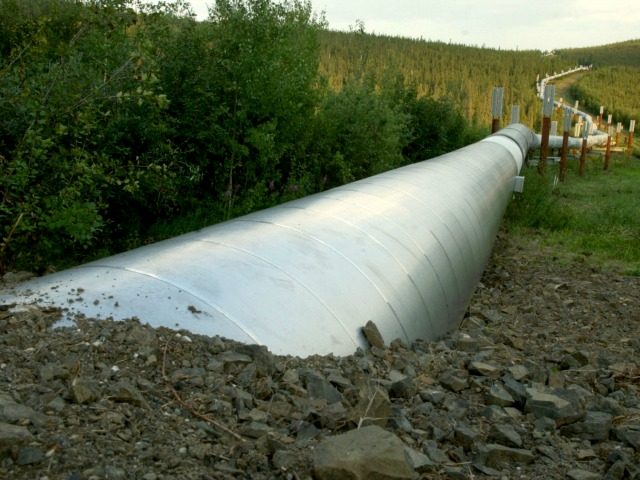We’re past Thanksgiving, so it can’t be long until Alaska’s biggest cable and telcom provider starts pushing the state’s legislature once again to fund permanent expenses with one-time money.
Last year, GCI spent more than $2 million – $3 million when executives’ time is figured in – to convince the state to tap the Alaska Permanent Fund to close a budget gap that now sits at $3.5 billion.
The state has put more than $50 billion in oil and gas royalties into the Permanent Fund since the 1970s, when oil started flowing through the Alaska Pipeline. Interest from the fund is used to fund the payments of about $2,000 per year that go to every resident in Alaska.
As late as 2015, Alaska passed a budget that depended on $100-per-barrel oil to make ends meet. With prices less than half of that and the state more dependent on oil for government revenues than any other, that brought the nation’s largest state face to face with some tough long-term questions.
First among these: whether to continue to give Alaskans the money and let them decide to spend it, or cut it in half, as Gov. Bill Walker proposes, and use the savings to address the budget shortfall.
Last year, with GCI sponsoring a coalition that included Democratic legislators, the labor movement, government employees and others, a measure passed Alaska’s state senate by a 14-5 vote that would have cut the dividend in half and directed the savings to shoring up the state budget. But the Alaska House of Representatives refused to pass the measure, even after being called back twice by Gov. Walker to approve it.
So the governor simply vetoed half the appropriation to pay the Permanent Fund Dividends to citizens and capped the amount of the payments at $1,000. Some lawmakers say he does not have the power to do this, and lawsuits have been filed.
Alaska residents already are more dependent on government aid than those of any other state. Lawmakers say at least half the deficit could be erased with budget cuts to education and aid programs, and they want to explore that before tapping an embattled funding source for ongoing expenses.
GCI, acting mainly through the Alaska’s Future coalition, spent lavishly to convince House members to go along. It had four lobbyists in Juneau, at a cost of $185,000, going door-to-door to lawmakers’ offices peddling “data” that suggested 60 percent of Alaskans were willing to give up half their dividend to pay for government services.
It had an East Coast lobbying outfit pushing in a way that some found uncomfortable. It had $230,000 in free advertising from GCI’s cable and TV stations. It had, in all, more than $1.8 million worth of TV and online ads urging Alaskans to accept these changes.
It paid Cheryl Frasca, a former state budget director, $9,500 to travel the state speaking in favor of the proposal.
It paid the law firm of the president of the state senate $13,000 and a consultant $12,000 to get out the word. It even paid $10,000 to a man who built a budget-balancing game with wood blocks and a giant scale to make the case.
It had former Gov. Tony Knowles, a Democrat, speaking on its behalf as well as the leaders of two Native American corporations in the state.
It had both Ben Sparks, who helped Dan Sullivan win his U.S. Senate seat in 2014, and Heather Handyside, spokesman for Mark Begich, the incumbent Sullivan defeated and now a GCI employee.
It had Rep. Bob Herron, D-Bethel, Jim Duncan, who leads the state employees union, and Vince Beltrami, leader of the Alaska AFL-CIO, on board.
But when the rubber met the road in a June vote in the House Finance Committee, the measure failed by 6-5 with two Democrats and three Republicans in favor and two Democrats and four Republicans against.
How did it fail?
“We still have not, I don’t think, done the work in making sure that constituents out there are onboard with walking in lockstep with us in trying to fix this thing going forward,” said State Rep. Lance Pruitt, R-Anchorage.
That’s sort of what Rep. Lynn Gattis, R-Wasilla, meant when she said she heard too much from high-priced lobbyists and too little from “regular Alaskans” to support the measure.
GCI will be back. It has spent too much money and remains convinced keeping state spending at current or higher levels is good for its business, regardless of what it means to the state. Knowles says last year’s failure should lead to this year’s success for proponents of raiding the state piggy bank.
“There is now a broad, statewide, bipartisan understanding that it is essential to use Permanent Fund earnings as a key part of balancing the budget and preserving a dividend program,” he wrote in an email.
Alaskans need to hope that’s not true and their leaders will not be swayed by the owner of a huge and profitable local business to mortgage the state’s future just so people won’t cancel their cable TV.

COMMENTS
Please let us know if you're having issues with commenting.